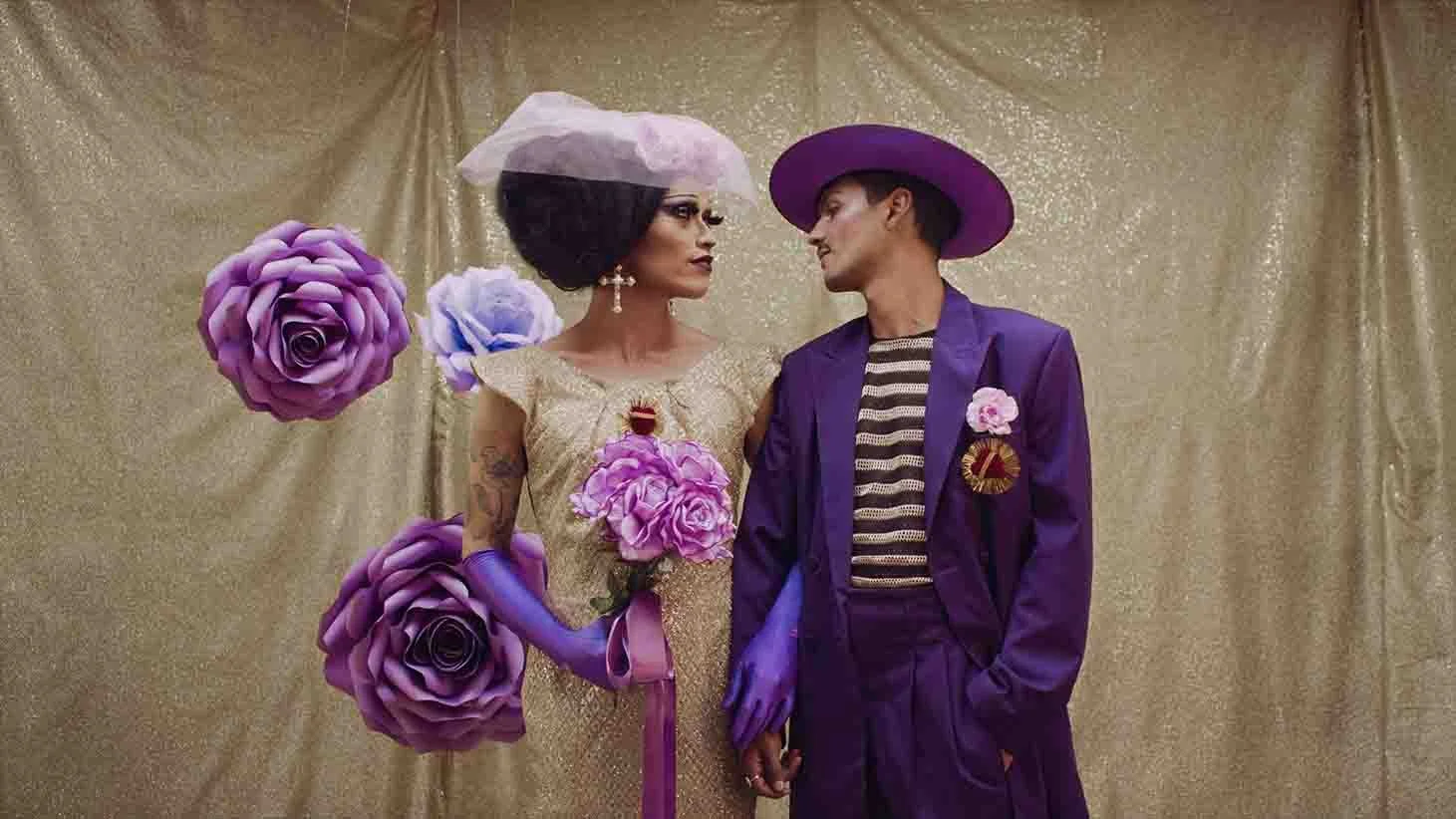Written & Directed by Mazdey Snob
Shot in the uncharted streets of Mexico City, Mijo is a colourful and fun fashion film inspired by the pachucos fashion from the 40s. The film is a collaboration with independent local artists, showcasing traditional Mexican tailoring, fashion, music and illustrations all in one project. Channelling the city's edgy and urban spirit, Mijo reinterprets the myth of King Midas through a modern Mexican lens.
Tell us a bit about yourself and your filmmaking background.
I studied graphic design, but I always wanted to work on audiovisuals. So when I discovered the fashion film I fell in love with the genre and the freedom that it has to tell stories - I then I started making fashion films in 2014. Almost all of my work as a director has been done with designers, artists and fashion brands. It has been great to be able to create with them, since it has been a very personal process, managing to create artistic films with commercial projection and achieving that balance. And also being recognized at festivals like yours, which makes me very proud.
What was your inspiration? Why did you decide to make Mijo?
My idea was for Mijo was to be a Mexican fairy tale, created with the elements of our culture and our streets. I decided to take the myth of King Midas and appropriate it to turn it into something that happens in Mexico. Instead of turning things into gold, his gift was to stylize everything that “Mijo” touches, to give it a fashion twist. All of this is told in the language of comedy. I wanted it to be something fun to watch and I wanted to give it a lot of moments during the story that you can treasure as a viewer, like the encounter with the puppy, his walk, or his daydreams.
Mijo's clothing is inspired by the style of the Pachucos of the 40's, it is a style that has caught my attention since I was a child. This fashion represents a lot in Mexico and has also been a symbol of resistance of migrants in the United States. Something that is important to me is the positive representation for us Mexican/Latino people with brown skin. In Mexico, curiously, being brown, black or dark-skinned is a stigma and in “Mijo” and in other of my works I have tried to combat that.
What obstacles did you overcome while in the making of this film?
It's a very detailed production that we had to accomplish on a tight budget, so we had to be very careful with the shooting schedule and how we distribute the expenses. It was a slow process of searching for each prop in the city's popular markets, which was also part of the spirit of the film.
Another difficulty was that we had limited time to record on location, we did not have the benefit of any institution since in Mexico it is difficult to have government support for independent productions. We put up the street decorations ourselves and we asked the people of each house for permission to do so. The cars that appear belong to private individuals and I found them searching the streets. I mean everything was local and independent, many people participated and trusted us and what we were going to create.
Tell us about the journey of getting your film to audiences.
Bringing “Mijo” to the public has become a very great experience. It has been selected and nominated at several festivals and has also received several awards such as “Best Glam” at LA Fashion Festival, “Best Actor model” at UK Film Fashion Festival, “Cinema Femme Short Film Fest Phenomenal Woman in Film award” and the “People's choice award” at ASVOFF.
But the best part is that I have received messages from people through social networks to tell me how much they like “Mijo”, how fresh they find the film and the positive representation. Being able to connect with people through my work is really rewarding. I have to give a special thanks here to Niccolo Montanari who has handled the distribution and is really wonderful to work with.
Words of wisdom. What advice would you give to other filmmakers?
In my experience so far, I think it is important to be aware that the system is very complex and does not provide equal opportunities for all. So it does not always mean that our work is bad. If the opportunity presents itself, you have to hold on to it or create the opportunity yourself. Of course it is very difficult, but it is about betting on what we do despite the fears and uncertainties that arise along the way. There are always those who believe in you and your work (which I appreciate very much) and also the audience can identify with what you have to say and your vision. So keep going and don't let go.
What are you working on it now?
I received an invitation from various platforms to give conferences and workshops about fashion film in the coming months and also the invitation from the GRRL HAUS Cinema festival in Berlin to carry out specialized curatorship on the subject. I am now a permanent resident in Spain and I recently directed a music video in San Sebastián, Basque country, so I am excited for the projects to come and always looking and open for agencies and people who want to work with me.
Any film recommendations that we should add to our watchlist?
The “Namesake” and “Queen of katwe” by Mira Nair , “The Roof” by Vittorio de Sica, “The Tale of the Princess Kaguya “ and “Pompoko” by Isao Takahata, “My Happy Family” by Nana Ekvtimishvili, “Noche de fuego / Prayers for the Stolen ” by Tatiana Hueso, “A Cop Movie” by Alonso Ruizpalacios, “Tangerine” by Sean baker. And I just saw “The 7 Lives Of Lea” on Netflix and I loved it.

